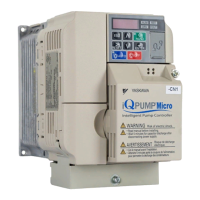
Do you have a question about the YASKAWA iQpump Micro CIMR-PW Series and is the answer not in the manual?
| Brand | YASKAWA |
|---|---|
| Model | iQpump Micro CIMR-PW Series |
| Category | Controller |
| Language | English |
Safety precautions for the receiving process, including handling and inspection of the drive.
Procedure to verify the received drive's model number and check the nameplate information.
Safety precautions related to mechanical installation of the drive.
Specifies the required environmental conditions for proper drive installation.
Details on the correct installation orientation and required spacing for airflow.
Provides the external dimensions and mounting information for various drive models.
Safety precautions for electrical installation, including wiring and power connections.
Illustrates the standard wiring diagram for connecting the drive and peripheral devices.
Shows the main circuit terminal block configurations for different drive sizes.
Procedure for removing and reattaching protective covers before and after wiring.
Steps for preparing IP66/NEMA 4X enclosure drives for wiring, including cable gland selection.
Details on functions, specifications, and procedures for wiring the main circuit terminals.
Explains the functions and wiring procedures for control circuit terminals.
Covers the sinking/sourcing mode switch and transistor input signal configurations.
Details on selecting analog input signals for frequency reference.
A checklist to ensure all wiring connections are correct before test run.
Safety precautions for starting up and programming the drive for initial operation.
Checklist and procedures for preparing the drive for start-up.
Instructions and checklist for powering up the drive and checking the operation status display.
Explanation of the LED operator keys, displays, and basic functions for operation.
Describes the two main operating modes: Drive Mode and Programming Mode.
Details on using the optional HOA keypad for commands, parameter changes, and data display.
Lists parameters affected by different application presets for pump control.
Describes iQpump presets and functions like Pump Down Level Control and General Purpose Mode.
Explains the process of auto-tuning the motor for optimal performance.
Procedure for operating the drive with the motor uncoupled from the load during a test run.
Instructions for connecting the load and running the motor and load together.
Guidance on checking parameter settings and backing them up to prevent accidental modification.
A checklist to review before performing a test run.
Covers parameters for initial setup like language, access levels, and password.
Application parameters for frequency reference, run command, PID control, and timers.
Parameters for acceleration/deceleration, S-curves, slip, torque compensation, and carrier frequency.
Parameters for setting various frequency references, including multi-step speeds and jump frequencies.
Parameters for configuring V/f patterns and motor data for optimal control.
Parameters for configuring communication option cards and fault detection methods.
Parameters for assigning functions to multi-function digital input and output terminals.
Parameters for motor protection, drive protection, and power loss ride-thru.
Parameters for advanced adjustments like Hunting Prevention and Overexcitation Braking.
Parameters related to the digital operator display settings and keypad functions.
Parameters specific to pump applications, including basic settings, protection, and advanced features.
Parameters for configuring the PID controller, including setpoints, output limits, and ripple regulation.
Parameters for special application functions like emergency override and drive protection.
Parameters for tuning the motor and drive for optimal performance through auto-tuning.
Parameters that allow viewing drive status, fault information, and other operational data.
Safety precautions to follow before performing any troubleshooting procedures.
Lists and describes various drive faults, alarms, errors, and messages.
Details fault displays, their causes, and possible solutions for troubleshooting.
Provides information on alarm codes, their causes, and possible solutions.
Identifies operator programming error codes, their causes, and solutions.
Lists tasks, errors, and troubleshooting steps related to the copy function.
Lists messages and errors that may appear during normal pump operation.
Safety precautions for performing periodic inspection and maintenance on the drive.
Provides recommended periodic inspections and checklists for maintaining drive performance.
Details on maintenance schedules, including replacement parts and performance life monitors.
Information on cooling fan replacement, including part numbers and procedures.
Procedures for replacing serviceable parts and the entire drive unit.
Details the power ratings for single-phase and three-phase drive models.
Provides detailed specifications for control methods, functions, and protection features.
Lists watt loss data for different drive models under various operating conditions.
Information on how ambient temperature, altitude, and carrier frequency affect drive capacity.
Lists all parameters organized by functional groups.
Covers parameters for initial setup like language, access levels, and password.
Application parameters for frequency reference, run command, PID control, and timers.
Parameters for acceleration/deceleration, S-curves, slip, torque compensation, and carrier frequency.
Parameters for setting various frequency references, including multi-step speeds and jump frequencies.
Parameters for configuring V/f patterns and motor data for optimal control.
Parameters for configuring communication option cards and fault detection methods.
Parameters for assigning functions to multi-function digital input and output terminals.
Parameters for motor protection, drive protection, and power loss ride-thru.
Parameters for advanced adjustments like Hunting Prevention and Overexcitation Braking.
Parameters related to the digital operator display settings and keypad functions.
Parameters specific to pump applications, including basic settings, protection, and advanced features.
Parameters for configuring the PID controller, including setpoints, output limits, and ripple regulation.
Parameters for special application functions like emergency override and drive protection.
Parameters for tuning the motor and drive for optimal performance through auto-tuning.
Parameters that allow viewing drive status, fault information, and other operational data.
Safety precautions for MEMOBUS/Modbus communications.
Details how drives can be controlled via serial communications using MEMOBUS/Modbus.
Lists the MEMOBUS/Modbus specifications including interface, speeds, and protocols.
Explains the connection of a drive to a MEMOBUS/Modbus network and network termination.
Describes parameters necessary to set up MEMOBUS/Modbus communications.
Explains drive operations controllable via MEMOBUS/Modbus based on parameter settings.
Details message timing for preventing overrun and data loss in slave drives.
Describes the message format for sending and receiving commands and responses.
Provides examples of command and response messages for register reading and loopback tests.
Lists all MEMOBUS/Modbus data including command, monitor, and broadcast data.
Explains the use of Enter commands for parameter value changes via MEMOBUS/Modbus.
Lists MEMOBUS/Modbus errors, their causes, and possible solutions.
Procedure for performing self-diagnosis of the serial communication interface circuits.
Safety precautions related to standards compliance.
Details CE mark compliance, Machinery Directive, Low Voltage Directive, and EMC guidelines.
Covers UL/cUL standards compliance, industrial control equipment certification, and motor overload protection.
Details UL standards compliance, installation area, ambient temperature, and chemical resistance.
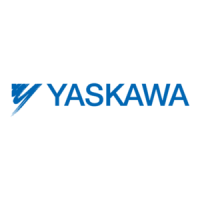
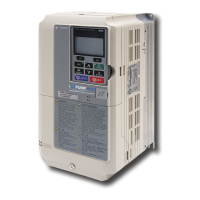


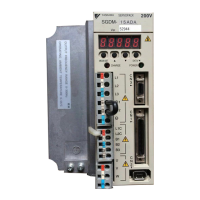
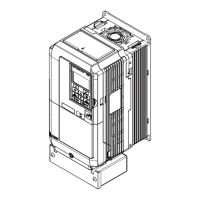
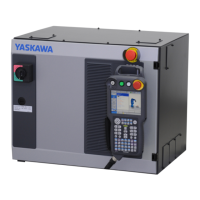
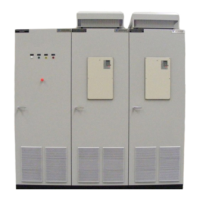
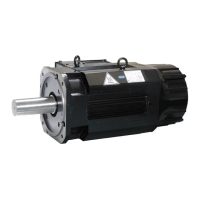
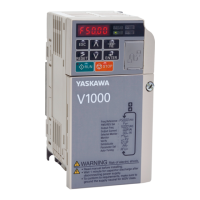
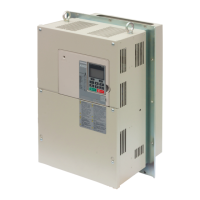
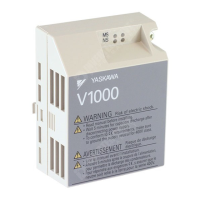
